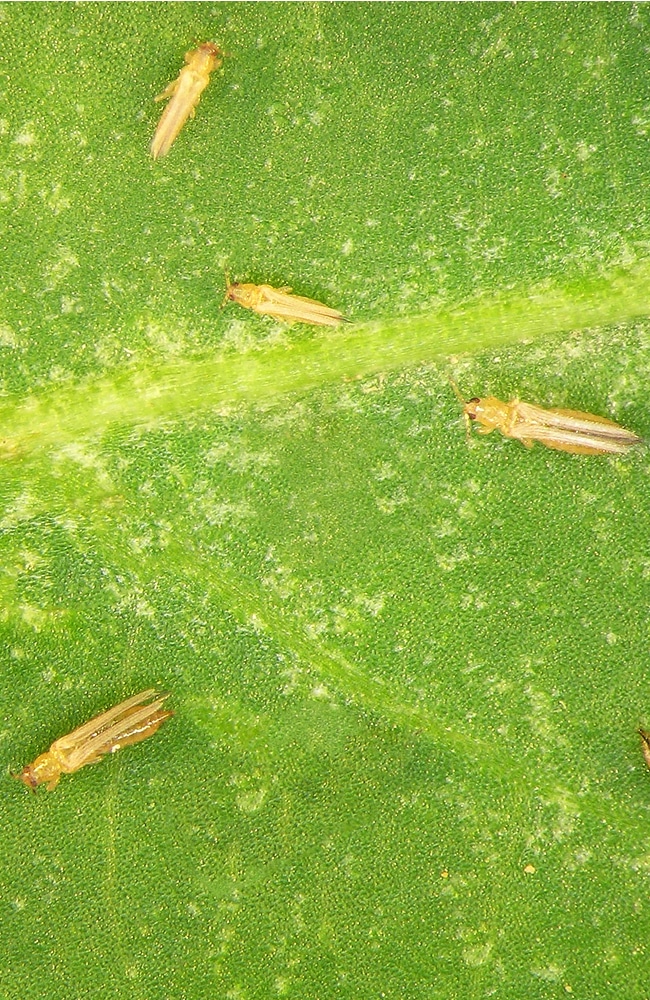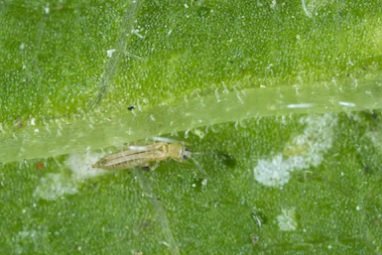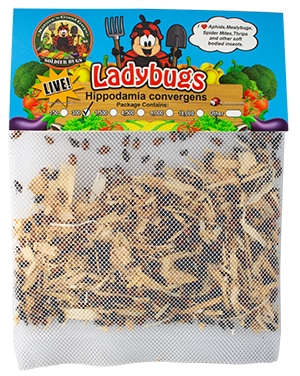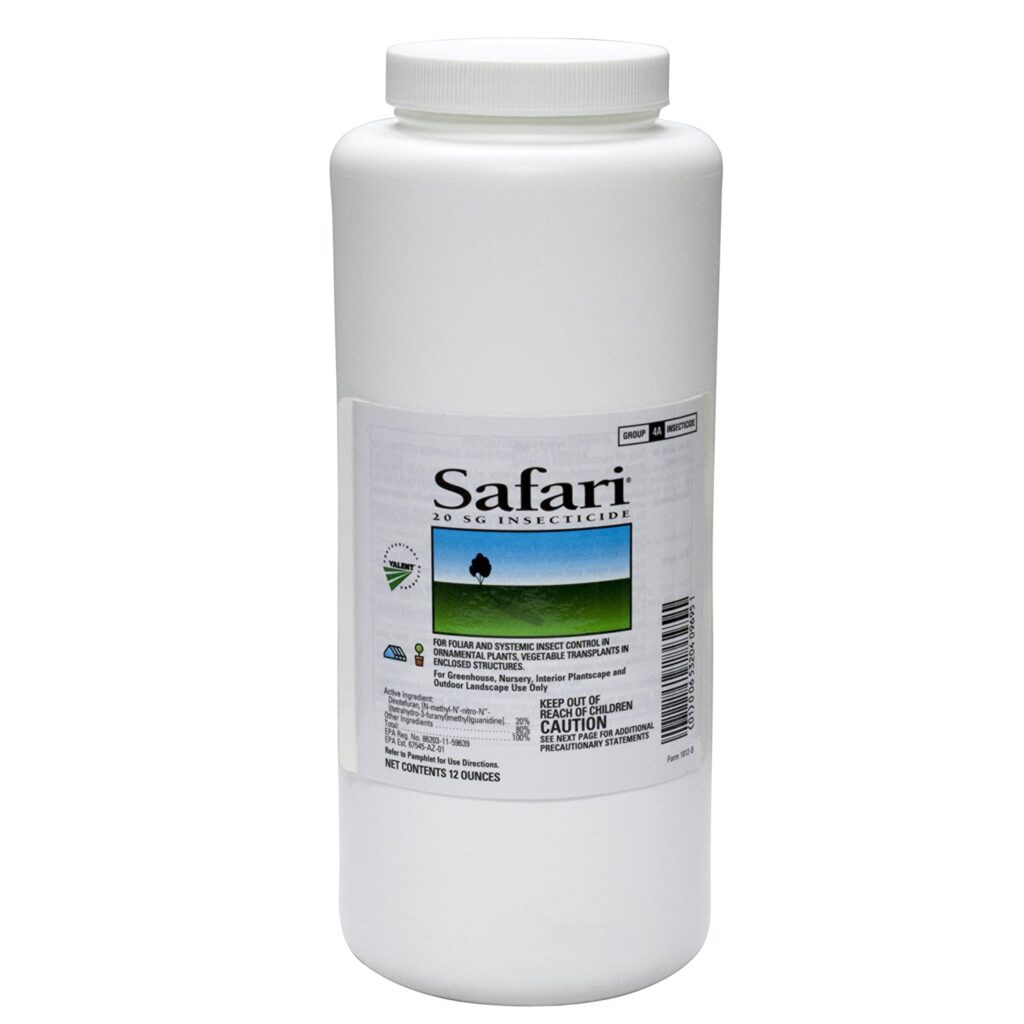Thrip infestations are horrid. Many advertised solutions do not work, which is why you need the best insecticides on the market. Do not be one of those people that figure that out too late. The solutions below will help you get rid of them once and for all.
You probably found this page because you have an infestation. I hate them. I bet you do too. And your plants definitely do as well.
Have you ever noticed that the leaves or fruits of your roses, tomatoes, onions, or irises are splotchy or gray? Or maybe your plants are twisting up and failing to thrive? This could be due to thrips.
They are a very common garden pest that scrapes at plant leaves and stems and then pulls the liquids from this damaged area. They can also cause damage by spreading various plant diseases. Luckily, there are several steps you can take to rid of them and stop the extensive damage they can cause.
Make sure to check out our vegetable and fruit growing guides here on the Green Pinky. We have many guides, such as guides on how to grow tasty squash.
Here are the our highest recommended killers
At A Glance
- OUR TOP CHOICENature Good Guys’ Live Ladybugs
- Monterey’s Spinosad Spray
- Dyna-Gro’s Neem Oil
- Natria’s Insecticidal Soap
- Valent Safari’s Dinotefuran
These are our top picks. Below you will see short descriptions as well as brief instructions. Make sure to follow the instructions on the product label itself as well.
Comparing Our Top 3 Recommendations

Best Insecticides for Thrip
Nature Good Guys’ Live Ladybugs
Inviting beneficial insects that prey on thrips into your garden is one of the safest and most effective ways to rid of them. Ladybugs are excellent thrip hunters. This particular package includes 1500 live ladybugs, and these beautiful bugs will not only eat them but also other damaging pests such as aphids, leafhoppers, whiteflies, mites, and mealybugs.
Ladybugs are an excellent choice for insect control because they are a natural, organic solution. Releasing ladybugs into your garden often means that you’ll be creating a colony of ladybugs that will thrive for years to come, and these colorful beetles will continue to control the pests in your garden season after season.
Make sure that when you first release the ladybugs, you spray your plants with some water. This will allow the ladybugs to quickly have some water to drink and thereafter start their mission of removing unwanted pests. If you receive a significant amount of dead ladybugs, contact the company. They are responsive and provide good customer service. If you really wanted to, you could supplement the ladybug’s diet with nectar or plant more flowers for when all the pests are obliterated.
Monterey’s Spinosad Spray
Spinosad is a naturally occurring substance that is made by blending two bacteria types, found in soil, that affect the nervous system of insects. Spinosad is a popular insecticide choice because it’s considered to be organic and can be used on a variety of plants, including fruits and vegetables. Spinosad is also largely non-toxic to people and animals, so it’s safe to use in areas where pets or children might come into contact with it, although caution should always be exercised.
Spinosad can be easily sprayed on plants in order to alleviate a thrip problem. In addition, Spinosad will also deter other insects such as borers, tent caterpillars, fruit flies, and gypsy moths. This particular Spinosad variety is a 0.5 percent concentrate and can be mixed to create about 16 gallons of pesticide.
Dyna-Gro’s Neem Oil
Neem oil is another natural insect repellant. In this case, the oil is made from the seeds of the neem tree. The oil has a number of uses—some people use it as a skin moisturizer while others coat the leaves of plants to make them look glossy and healthy. However, neem oil is most commonly used to deter insects. It works by making it difficult for the insects to feed. Insects may also be turned off by the scent of the oil.
Neem oil can be mixed into a simple solution so that it can be more easily sprayed onto plants. A mix of one liter of water, eight milliliters of neem oil, and five milliliters of liquid castile soap creates a safe, gentle solution that’s easily applied. The castile soap will act as an emulsifier, or mixing agent, to ensure that the neem oil blends with the water.

Natria’s Insecticidal Soap
Insecticidal soap is ready to use out of the bottle and can be sprayed directly onto plants. This insecticide’s main ingredient is potassium salts of fatty acids, also known as soap salts, which is where the product gets its name. These salts occur when an alkali is mixed with a natural oil, such as coconut oil. Because it’s made of natural ingredients, the soap is non-toxic and safe to use even on fruits, vegetables, and nuts that will be eaten.
Insecticidal soap kills or deters a wide range of insects including thrips, aphids, whiteflies, tent caterpillars, and mealybugs. However, it doesn’t tend to harm hard-bodied insects such as ladybugs, so it’s actually quite beneficial to use this product in conjunction with ladybugs.
Valent Safari’s Dinotefuran
Dinotefuran is a chemical developed specifically to kill insects. It can be mixed with water and sprayed onto plants in order to stop or control infestations. In addition to thrips, dinotefuran also helps to eliminate mealybugs, fungus gnats, lacebugs, whiteflies, and leafminers, among others.
Unlike the solutions mentioned above, dinotefuran is not organic and can be quite toxic to people, pets, and beneficial insects. Using the product carefully and sensibly will get you good results in your garden with healthier plants.

You may also be interested in checking out our article on how to grow cucumbers successfully.
Everything a Gardener Should Know About Thrips
The exact lifecycle and how they damage plants, depends on the specific species that you are dealing with. Generally, though, they hibernate in soil through the winter. Garden soil, which is loose and easy to burrow into, is a particular favorite. In the spring, the females emerge and lay their eggs directly into the stems or leaves of plants.
Once the larvae hatch from their eggs, they are incredibly hungry. This is when they begin to feed on plant sap, sucking the nutrients directly from the plant’s leaves or stem. The thrips then go through two more growth stages before they return to the soil. Once back in the soil, they become pupae. The pupae emerge later, often after a winter spent in the soil, as winged adults.
Thrips damage plants simply by how they feed on them, scraping at the delicate surfaces of the leaves and draining them of nutrients. However, some species also help to spread diseases such as tomato spotted wilt. It has been discovered that they can actually transmit more than 20 different plant diseases and viruses.
How to Identify
Despite the vast amount of damage they’re capable of, thrips are actually quite small. Adults are only about 1/25 of an inch long. Their color will depend on the specific species you’re dealing with, but they range from light tan to darker brown or even black. They also have narrow wings.
The larvae, which are what cause damage to plants, are even smaller and more difficult to spot. They have yet to develop their wings and are often yellow or green in color.
It’s often easier to identify them by the damage they cause. Plants may have wilted or discolored leaves. This discoloration is often seen as streaks or patches. In addition, some thrips cause rolls or folds in the leaves.
Prevention
Aside from the solutions listed above, you can also work to make your garden a less appealing place for thrips in general. To begin with, they are often attracted to bright colors, particularly yellow, white, and blue. Using a sticky trap in these colors can confuse them and may help you trap them. This can often mean trapping females before they have a chance to lay their eggs.
Aside from ladybugs, there are also a number of other beneficial insects, such as pirate bugs, that eat thrips. Making your garden an appealing place for these insects can help to control problems with thrips. It can also help to ensure that the ladybugs you’ve introduced stick around. For example, ladybugs thrive when plants such as tansy, geraniums, cilantro, and cosmos are present.
When introducing new plants to the garden, it’s important to carefully inspect them for any signs of thrip damage. Plants that you worry may be infested should either be quarantined or disposed so that you do not introduce the pests into the rest of the garden.

Tips for Applying Insecticides
Insecticides such as neem oil, insecticidal soap, and Spinosad are generally considered safe for plants. However, it’s always important to test how your plants will react to a product before applying it more broadly. This is particularly true for insecticidal soap, which can sometimes be too harsh for plants. You can test any solution by spraying a few leaves or a small part of the plant and observing the plant for a day or two. If the plant reacts poorly, stop using the insecticide. The good thing about gentle solutions such as insecticidal soap and neem oil is that it does not harm beneficial insects such as ladybugs.
Even organic products can sometimes be harmful to the environment. In order to mitigate the risk of harming the ecosystem, try to eliminate runoff. Only use sprays on dry days when there will be no rain for at least 24 hours. In addition, try to only spray on still days when there isn’t too much of a breeze.
In order to keep honey bees safe, don’t use any harsh chemicals when flowering plants are in bloom, which is when bees will be visiting most frequently. Creating a garden that’s safe for bees means creating a garden that’s healthy and thriving.
Bottom Line
Again, I recommend buying live ladybugs for your thrip problem. Don’t make the mistake of buying any average insecticide at your local gardening store only to find it is not effective weeks later. Many of them will simply not produce the same results. You cannot go wrong with any of the insecticides above.
–The Green Pinky





